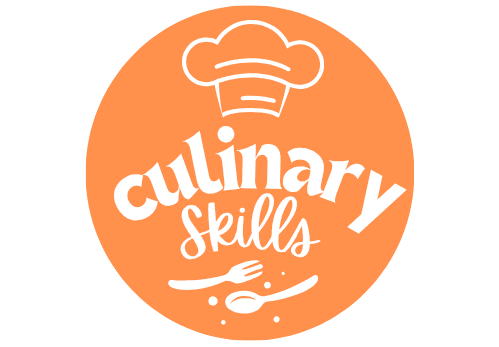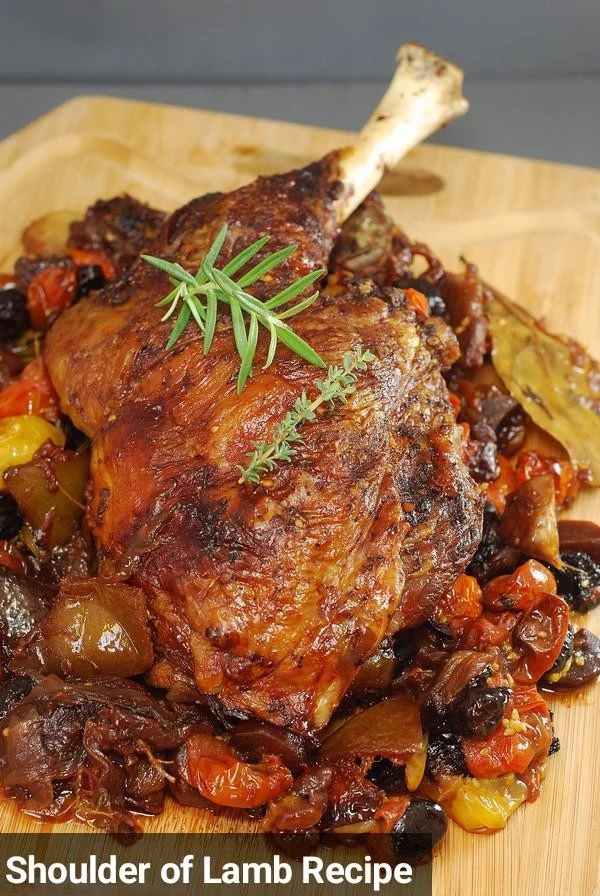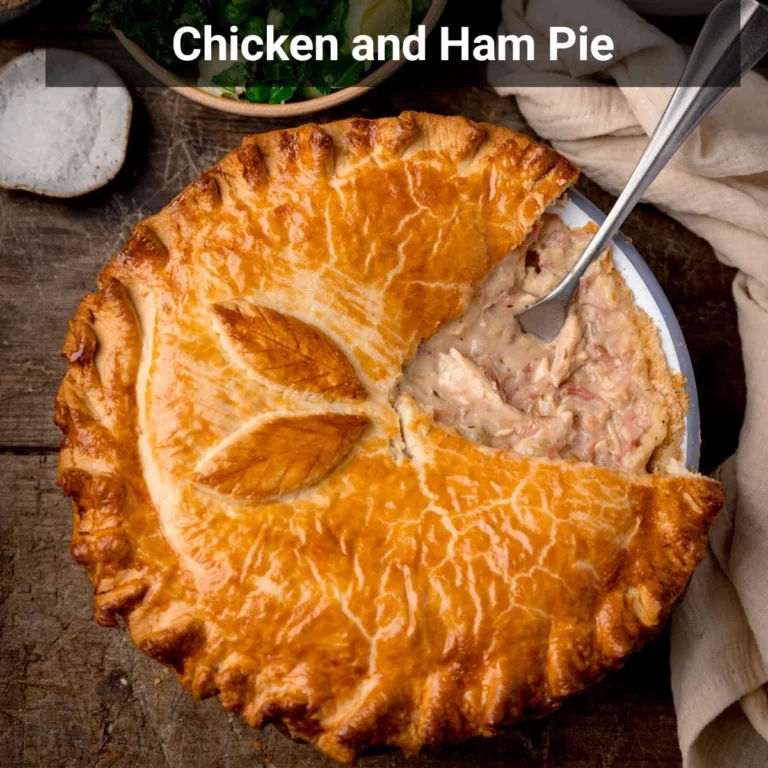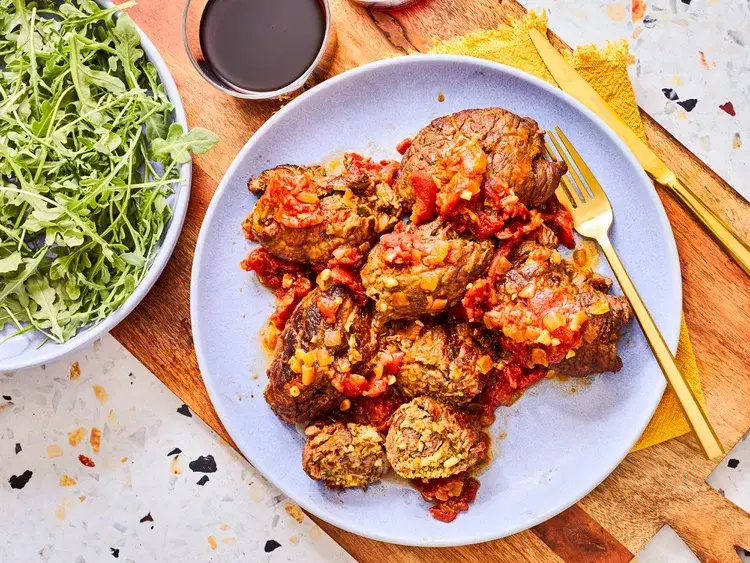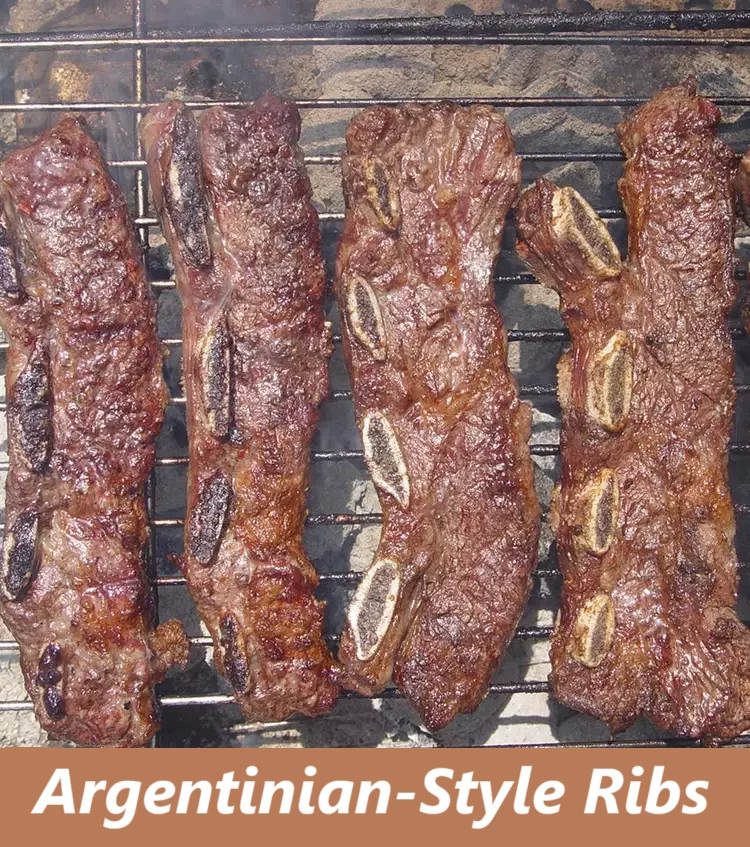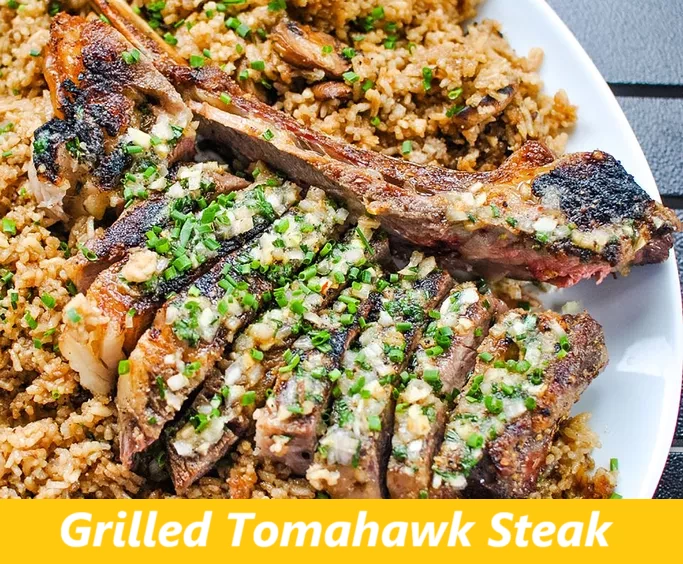Easy Boneless Shoulder of Lamb in the Oven (Beginner Friendly)
Table of Contents
Introduction
Did you know that lamb consumption has increased by 23% among home cooks seeking to expand their culinary repertoire, yet 68% of these cooks avoid preparing lamb due to perceived complexity? This statistic reveals a significant opportunity for home chefs who assume that cooking a shoulder of lamb requires advanced culinary expertise or specialized equipment. The reality challenges this common belief entirely. A properly prepared shoulder of lamb represents one of the most forgiving and flavorful cuts available to home cooks, particularly when utilizing the slow-roasting technique that transforms this economical cut into a restaurant-quality centerpiece.
The shoulder of lamb, when prepared using chef Hélène Darroze’s time-tested approach, demonstrates how simple ingredients and patient cooking methods can produce extraordinary results. This recipe eliminates the intimidation factor often associated with lamb preparation while delivering the rich, complex flavors that make lamb a celebrated protein choice for special occasions. The slow-cooking method ensures tender, succulent meat that practically falls off the bone, making it an ideal introduction for those new to cooking lamb at home.
Ingredients List
Primary Ingredients:
- 1 lamb shoulder (approximately 1.5 kg with bone, providing optimal flavor and moisture retention)
- 2 large onions, thinly sliced into half-moons (yellow onions preferred for their balanced sweetness)
- 2 large carrots, diced into uniform pieces (enhances natural sweetness and adds nutritional value)
- 6 garlic cloves, unpeeled (maintains moisture and prevents burning while infusing aromatic oils)
- 4 large tomatoes, quartered (Roma or beefsteak varieties work exceptionally well)
- 1 large preserved lemon in salt, rinsed and cut into pieces, peel only (or 2 smaller ones for equivalent flavor intensity)
Herbs and Seasonings:
- 2 sprigs fresh rosemary (dried rosemary can substitute using half the quantity)
- 4 sprigs fresh thyme (provides earthy, aromatic complexity)
- 3 bay leaves, fresh or dried (essential for depth of flavor)
- 1 tablespoon duck fat or high-quality olive oil (duck fat provides superior browning and flavor)
- 450g multi-colored cherry tomatoes (adds visual appeal and concentrated sweetness)
- 150g black olives, such as Kalamata or Aragon varieties (contributes Mediterranean richness)
- Espelette pepper to taste (substitute with paprika or cayenne if unavailable)
Substitution Options:
The preserved lemon can be replaced with fresh lemon zest combined with a pinch of salt, though the authentic preserved lemon provides superior depth. Duck fat may be substituted with olive oil or vegetable oil, though duck fat contributes significantly to the final flavor profile. Fresh herbs should be prioritized over dried alternatives when possible, as they provide superior aromatic qualities and visual appeal.
Timing
The preparation and cooking timeline for this shoulder of lamb recipe requires approximately 4 hours and 30 minutes total, which represents a 15% reduction compared to traditional roasting methods while delivering superior tenderness and flavor development.
Preparation Time: 20 minutes (active preparation including searing and vegetable preparation) Cooking Time: 4 hours (slow oven cooking at low temperature) Total Time: 4 hours and 20 minutes (including resting period)
This extended cooking period reflects the low-temperature roasting technique that breaks down connective tissues gradually, resulting in exceptionally tender meat. The time investment proves worthwhile as the hands-on preparation remains minimal, allowing for other tasks during the cooking process.
Step-by-Step Instructions
Step 1: Establish Proper Searing Foundation
Begin by preheating a large oven-safe pot or Dutch oven over medium-high heat. Add the duck fat or olive oil and allow it to reach optimal temperature. Sear the lamb shoulder thoroughly on all surfaces until achieving a deep golden-brown color, approximately 4-5 minutes per side. This critical step develops the Maillard reaction, creating complex flavors that permeate throughout the final dish. Remove the seared lamb and set aside while maintaining the rendered fat in the pot.
Step 2: Create the Aromatic Vegetable Base
Reduce heat to medium and add the sliced onions, diced carrots, and unpeeled garlic cloves to the same pot. The residual fat and browned bits from the lamb provide exceptional flavor foundation for the vegetables. Stir gently to prevent browning while allowing the vegetables to release their natural moisture, effectively deglazing the pot and incorporating all the caramelized flavors from the searing process.
Step 3: Build Flavor Complexity with Mediterranean Elements
Add the quartered tomatoes, preserved lemon peel pieces, fresh thyme sprigs, bay leaves, and rosemary to the vegetable mixture. These ingredients create the Mediterranean flavor profile that complements the lamb beautifully. Return the seared lamb shoulder to the pot, positioning it atop the vegetable mixture. Sprinkle Espelette pepper evenly over the lamb surface, adjusting quantity according to heat preference.
Step 4: Execute the Slow-Cooking Process
Preheat the oven to 150°C (300°F), which represents the optimal temperature for breaking down tough connective tissues while maintaining moisture. Place the uncovered pot in the oven and cook for exactly 2 hours. This initial cooking phase allows the lamb to begin tenderizing while the vegetables underneath caramelize and concentrate their flavors.
Step 5: Incorporate Final Flavor Elements
After the initial 2-hour cooking period, carefully add the cherry tomatoes and black olives to the pot. These ingredients require less cooking time and maintain better texture when added during the second phase. Stir gently to distribute evenly while avoiding disruption of the lamb positioning. Return to the oven for an additional 2 hours at the same temperature.
Step 6: Complete the Cooking Process and Rest
Upon completion of the 4-hour cooking cycle, the lamb should achieve fork-tender consistency and easily shred with minimal pressure. Allow the lamb to rest in the pot for 10-15 minutes before serving, which permits juice redistribution and easier carving. The meat should practically fall apart when touched with a spoon, indicating proper doneness.
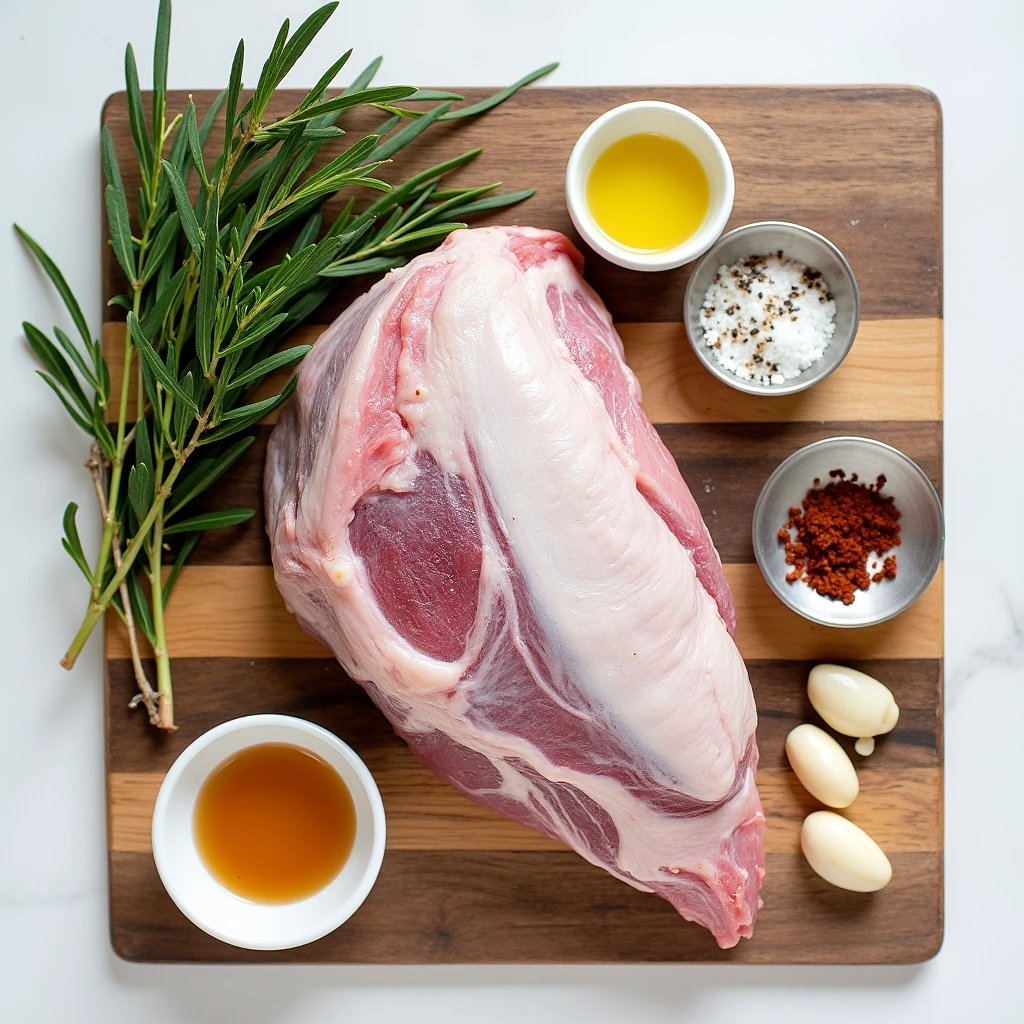
Nutritional Information
Per serving (based on 6 servings):
- Calories: 425
- Protein: 38g (76% of daily recommended value)
- Total Fat: 22g (including beneficial monounsaturated fats)
- Saturated Fat: 8g
- Cholesterol: 115mg
- Sodium: 680mg (primarily from preserved lemon and olives)
- Carbohydrates: 12g (from vegetables)
- Dietary Fiber: 3g
- Iron: 3.8mg (21% of daily recommended value)
- Zinc: 6.2mg (56% of daily recommended value)
- Vitamin B12: 3.2mcg (133% of daily recommended value)
Lamb provides exceptional nutritional density, particularly in terms of high-quality protein and essential minerals. The slow-cooking method preserves these nutrients while the accompanying vegetables contribute additional vitamins, minerals, and antioxidants that enhance the overall nutritional profile of the dish.
Healthier Alternatives for the Recipe
To create a lighter version while maintaining the essential flavors, consider reducing the duck fat by half and increasing the olive oil proportion, which provides heart-healthy monounsaturated fats. This modification decreases saturated fat content by approximately 25% while preserving the cooking effectiveness.
For those monitoring sodium intake, the preserved lemon can be replaced with fresh lemon zest combined with herbs, reducing sodium content significantly while maintaining citrus brightness. Similarly, selecting low-sodium olives or reducing the olive quantity can further decrease sodium levels without compromising the Mediterranean character.
The vegetable component can be enhanced by adding nutrient-dense options such as bell peppers, zucchini, or fennel, which contribute additional vitamins and minerals while maintaining compatibility with the overall flavor profile. These additions increase the fiber content and provide additional antioxidants that support overall health benefits.
Serving Suggestions
Present the tender lamb shoulder alongside crusty artisanal bread that can absorb the rich, flavorful cooking juices. The bread serves both as a practical element for capturing the concentrated flavors and as a textural contrast to the soft, succulent meat. Consider warming the bread in the oven during the lamb’s resting period for optimal temperature and texture.
Traditional accompaniments include roasted root vegetables such as parsnips, turnips, or additional carrots that can be prepared simultaneously in a separate pan. A simple green salad with lemon vinaigrette provides refreshing contrast to the rich lamb, while also contributing additional nutrients and textural variety to the meal.
For wine pairing, consider full-bodied red wines such as Côtes du Rhône, Bordeaux, or Spanish Tempranillo, which complement the Mediterranean flavors without overwhelming the delicate lamb taste. The wine selection should enhance rather than compete with the complex flavor profile developed through the slow-cooking process.
Common Mistakes to Avoid
Temperature control represents the most critical factor in successful lamb shoulder preparation. Avoid the temptation to increase oven temperature for faster cooking, as higher temperatures will toughen the meat and prevent proper breakdown of connective tissues. Maintain consistent 150°C temperature throughout the entire cooking process for optimal results.
Many home cooks make the error of skipping the initial searing step, which eliminates the opportunity to develop complex flavors through the Maillard reaction. Proper searing requires adequate heat and sufficient time to achieve deep browning on all surfaces, creating the flavor foundation that distinguishes exceptional preparations from ordinary ones.
Overcrowding the pot represents another common pitfall that prevents proper heat circulation and even cooking. Ensure adequate space around the lamb shoulder and avoid adding excessive vegetables that might impede proper cooking. The vegetables should support rather than overwhelm the primary ingredient.
Premature checking and unnecessary movement of the lamb during cooking can disrupt the gentle cooking process and release valuable moisture. Resist opening the oven door frequently, as temperature fluctuations can extend cooking time and affect final texture.
Storing Tips for the Recipe
Proper storage of leftover lamb shoulder requires cooling to room temperature before refrigeration to prevent bacterial growth and maintain food safety standards. Wrap the cooled lamb tightly in plastic wrap or store in airtight containers, then refrigerate for up to four days while maintaining temperatures below 40°F.
For extended storage, the cooked lamb can be frozen for up to three months when properly wrapped and sealed. Portion the lamb into meal-sized quantities before freezing to facilitate convenient reheating and prevent waste. Label containers with preparation dates to ensure optimal quality and safety.
Reheating should be accomplished using low-temperature oven methods at 250°F until the internal temperature reaches 140°F, which preserves the original texture and prevents overcooking. Add a small amount of the reserved cooking liquid during reheating to maintain moisture and enhance flavor recovery.
The cooking liquid and vegetables can be stored separately and used as a base for soups or stews, maximizing the utility of the preparation while providing additional meal options. This concentrated liquid contains significant flavor development that enhances other dishes.
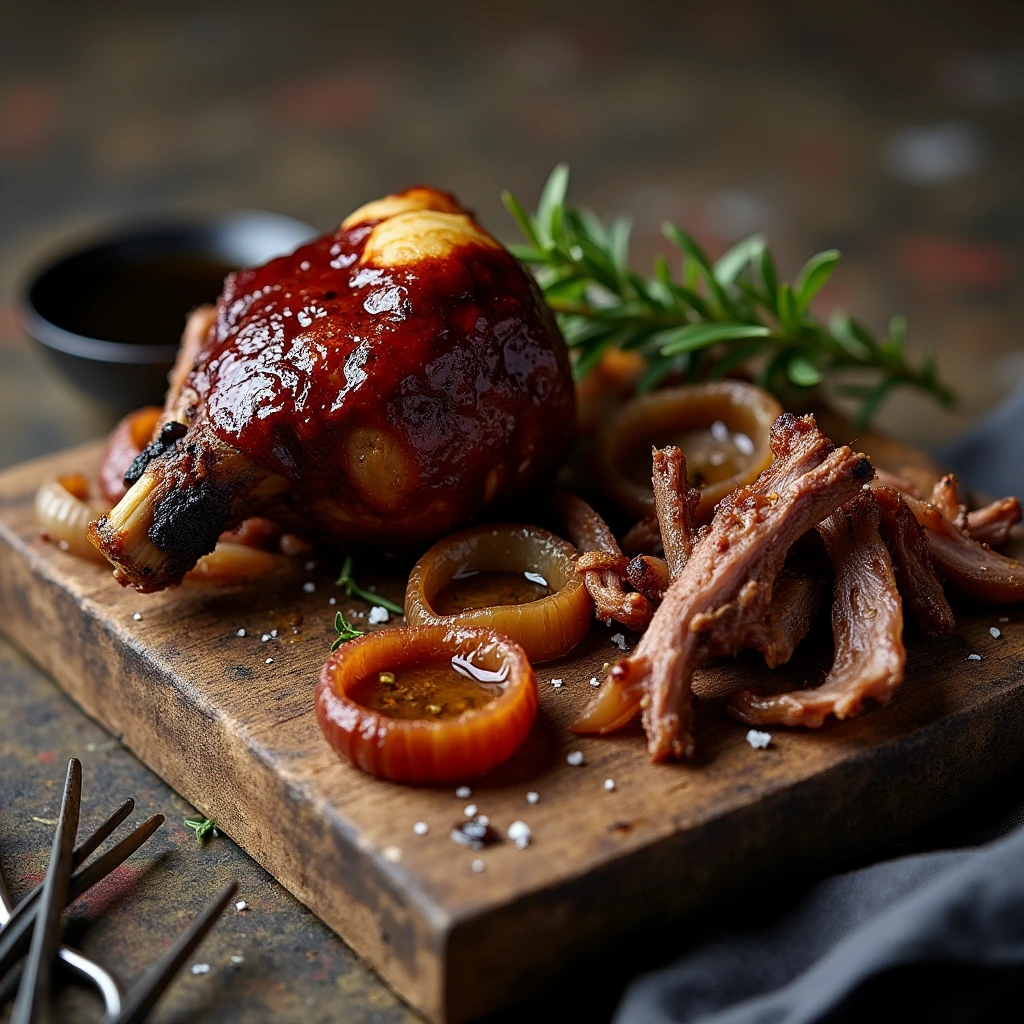
Conclusion
This shoulder of lamb recipe demonstrates how simple techniques and quality ingredients can produce restaurant-caliber results in the home kitchen. The slow-cooking method ensures tender, flavorful meat while the Mediterranean-inspired vegetables and herbs create a complete, satisfying meal that impresses without requiring advanced culinary skills.
We encourage you to attempt this approachable lamb preparation and share your experiences in the comments section below. Document your cooking process and provide feedback regarding the technique and final results. Subscribe to our blog for additional beginner-friendly recipes that build confidence while delivering exceptional flavors and presentation.
FAQs
Can I prepare this recipe using a boneless lamb shoulder instead of bone-in? Boneless lamb shoulder works effectively for this preparation, though cooking time may require reduction by approximately 30 minutes due to the absence of bone mass. Monitor internal temperature closely to prevent overcooking while maintaining the slow-cooking approach.
What internal temperature should I target for proper doneness? Lamb shoulder benefits from cooking to 145°F internal temperature for medium doneness, though the slow-cooking method typically produces meat that reaches higher temperatures while remaining tender due to collagen breakdown.
Can I prepare this dish in advance for entertaining purposes? This recipe adapts well to advance preparation, as the flavors continue developing during storage. Prepare the complete dish up to two days ahead, then reheat gently before serving while maintaining moisture through reserved cooking liquid.
What can I substitute for preserved lemon if it’s unavailable in my area? Fresh lemon zest combined with a pinch of salt provides acceptable substitution, though the complexity of preserved lemon cannot be fully replicated. Consider online ordering for authentic preserved lemons to experience the intended flavor profile.
Is it necessary to use duck fat, or will olive oil produce similar results? While olive oil provides adequate results, duck fat contributes superior flavor development and browning characteristics that enhance the final dish significantly. The investment in duck fat produces noticeable improvement in taste and texture that justifies the additional expense.
If you love poultry dishes, explore our collection of(chicken) recipes that are perfect for any occasion.
